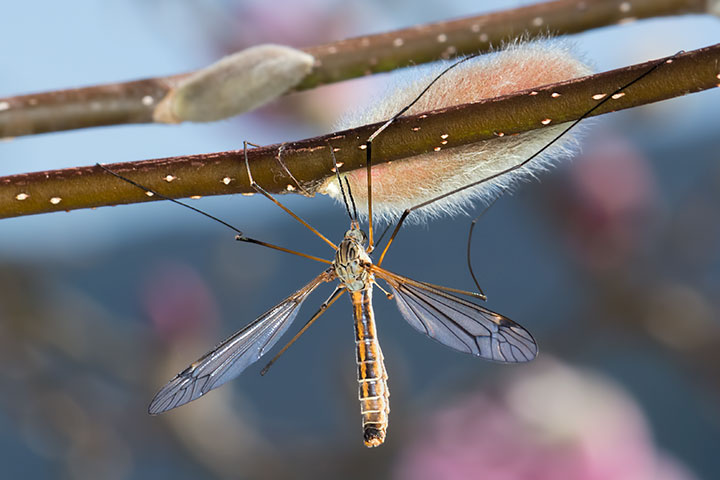Rockets have them; drones have them; cruise ships have them; space telescopes have them; smart phones have them; and some insects have them. They are gyroscopes, rapidly spinning or vibrating devices that, by maintaining orientation in space, can assist navigation by monitoring changes in direction.
The insects with gyro-stabilized flight are found in Diptera, the order comprising true flies. The ancestors of Diptera, which means two wings, had four wings. The two hind wings evolved to become the halteres, rapidly vibrating organs that assist in inertial navigation and look like twirlers’ batons.
While a characteristic of all flies, the halteres are especially visible on a crane fly. They are the two rods, terminated with a ball, located just behind the wings. The halteres are set at right angles to each other, ideal for detecting changes in orientation about two axes. 

Terrific photo, Alistair. And thank you for the excellent explanation of halteres and their function. You do a wonderful job of highlighting the beauty and fascination of insects. If I may take it upon myself to act as their spokesperson in this case, thank you from the entire Class Insecta 🙂
Lynn, I am—we all are—indebted to Insecta for a vast array of things, so that my delight in them barely registers on humanity’s Insecta-appreciation meter. Nevertheless, I accept you as their local representative and welcome your approbation. Now, could you possibly negotiate an amnesty for me with the mosquitoes?